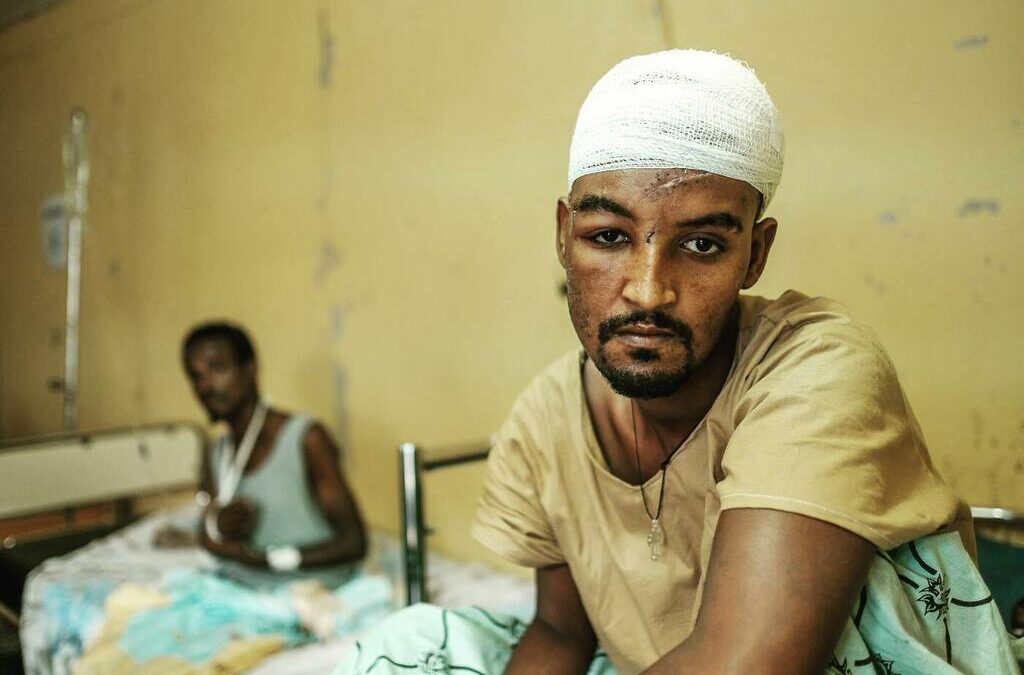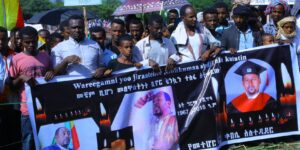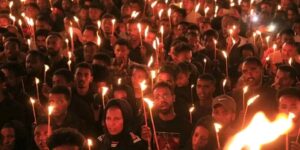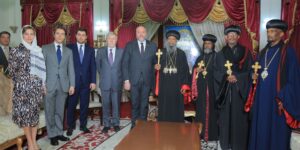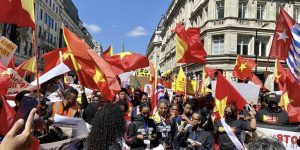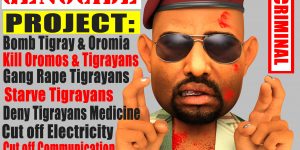Maikadra Residents of Tigrayan ethnic origin who fear for their safety, including women and children, have been assembled in a temporary shelter under the protection of government security forces. Residents told EHRC that some perpetrators of the attacks may have also taken refuge among the people in the shelter but EHRC could not independently verify this information.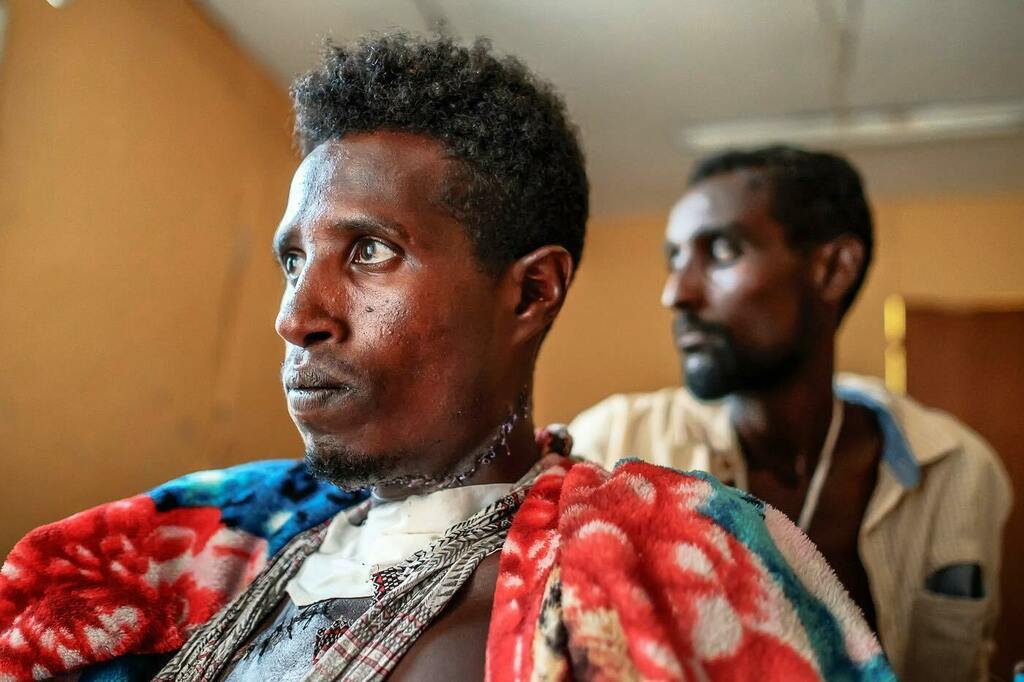
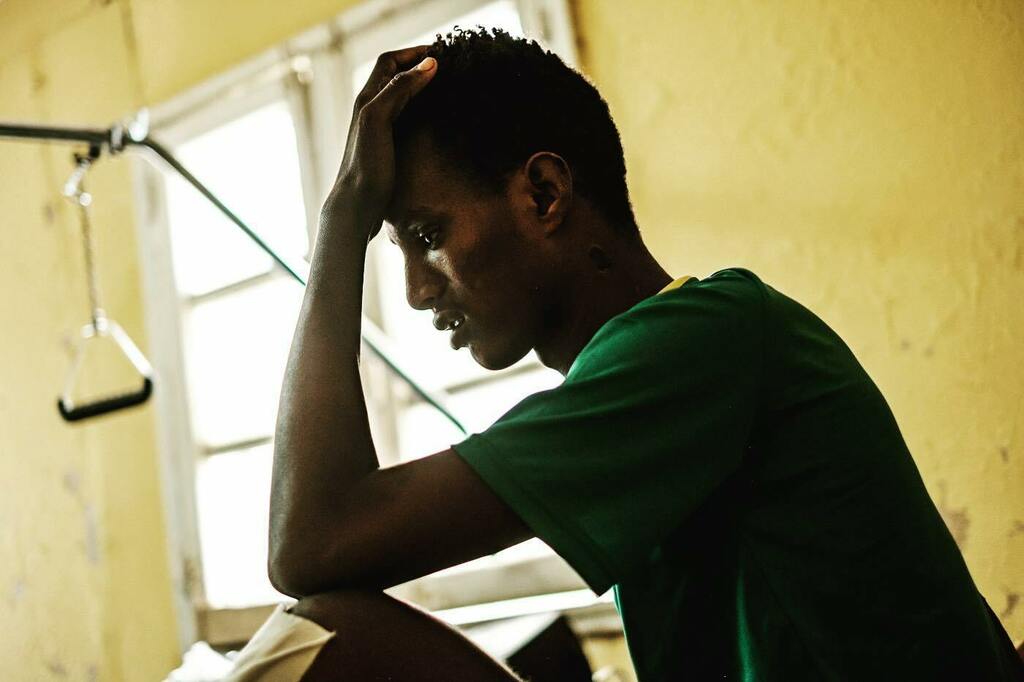
Introduction
The Ethiopian Human Rights Commission (EHRC)-The Commission deployed a team of human rights experts to Maikadra, in Tigray Region Western Zone, for a rapid investigation into purported mass killings of civilians and related human rights violations.
Between November 14th, 2020 and November 19th, 2020, the EHRC team travelled between Maikadra, Abrhajira, Sanja, Gondar, Dansha and Humera and gathered testimonies and other evidences from victims, eye witnesses, families of victims, first responders, military personnel and various other sources including government authorities who were present at the time of EHRC’s visit. The team also visited hospitals and health facilities and talked to survivors and other relevant authorities.
This report presents the mission’s key preliminary findings along with highlights of ongoing human rights concerns and recommendations. The full report will follow with additional detailed and verified evidence.
Preliminary findings
Brief description of Maikadra
Maikadra is a rural town located in Western Zone, Hafta Humera Woreda of Tigray Region. It is situated 30 kilometers south of Humera and 60 kilometers north of Midre Genet (also known as Abdurafi). An estimated 40,000 to 45,000 people of Tigrayan, Amhara, ’Wolkait’ and other ethnic origin reside there. Wolkait is the local name for people of Amhara descent who were born or have long resided in Wolkait Woreda.
Seasonal workers, mainly from Amhara Region but also from a few other areas, go to Maikadra for seasonal work on large sesame and millet farms on the outskirts of the town, locally known as ‘desert plains’, and live in one designated neighborhood with groups of up to 12 people sharing a single house. As in every other year, these seasonal laborers, also known as ‘saluks’, have been in Maikadra since September for the season’s harvest.
1
Preparation leading up to and start of the attack
People of non-Tigrayan ethnic origin, and especially of Amhara and Wolkait origin, have been subjected to great fear and pressure from the day the conflict between the Federal and the Tigray regional governments broke out on November 4th, 2020. The seasonal labourers, in particular, were altogether prohibited from moving freely in the town, from going to work and even from returning to their usual place of residence.
A few days before the attack, when the Ethiopian Defence Forces were said to be nearing the town, the local administration police and militia forces shut all the exit points from Maikadra. (Militia refers to armed community security personnel who are not part of the regular police force but are set up by regional/local administration within the structure of, as applicable, either the Regional Peace and Security Bureau or the Regional Police Commissions. They are therefore part of the government security apparatus. In rural towns and villages with no regular police, in particular, militia serve as first security responders.)
Some of the Maikadra residents who attempted to escape to the ’desert plains’ or the nearby Sudanese town of Berehet, fearing attacks by a defeated and retreating Tigrayan militia and special force, were forced back home by the local militia. Around the same time, members of “Samri” – an informal Tigrayan youth group -set up and manned checkpoints at all of the town’s four main exits.
On November 9, 2020, the day of the attack, from around 11:00 AM onwards, the town police started checking identity cards to differentiate people of non-Tigray origin from the rest and raided all the houses/huts, stretching from the neighbourhood known as “Genb Sefer” up to the area called Wolkait Bole (Kebele 1 Ketena 1) which is largely resided by ethnic Amharas.
They detained up to 60 people they profiled as Amhara and Wolkait and who were said to use Sudanese SIM cards on their mobile phones and destroyed said SIM cards. Ethiopian SIM cards had already stopped working by then and the motive for confiscating and destroying the Sudanese SIM cards was to prevent any communications or call for help during the attack, according to testimony of the people in the area. Women and children of Tigrayan ethnic origin were made to leave the town a few hours ahead of the attack.
On the same day (November 9th , 2020), around 3:00 P.M., the local police, militia and the informal Tigray youth group called “Samri” returned to “Genb Sefer” where the majority of people of Amhara ethnic origin live and began the attack against civilians.
According to eyewitnesses and families of victims who spoke with EHRC, the first act committed by the perpetrators was to execute an ethnic Amhara former soldier called Abiy Tsegaye in front of his family and outside his house and set the house on fire. Afterwards, they threw his body into the fire. Residents said Abiy Tsegaye was a former soldier and militia member who had declined a request to re-join the militia as tensions began to rise.
They surmise that this might be why he was targeted. The victim’s wife and eyewitnesses have given a detailed account of how the group of perpetrators forced Abiy Tsegaye out of his house and had him shot in front of his family by a local militia and former colleague called Shambel Kahsay, before throwing his body into the raging fire that engulfed their house. The EHRC team also visited said house, still smouldering, and the area around it, still heavy with burned body smoke.
2
How the massacre of civilians unfolded
Immediately after the attack on Abiy Tsegaye’s house, members of Samri, with the help of the local police and militia, moving from house to house and from street to street, began a cruel and atrocious rampage on people they pre-identified/profiled as Amharas and Wolkaits. They killed hundreds of people, beating them with batons/sticks, stabbing them with knives, machetes and hatchets and strangling them with ropes. They also looted and destroyed properties.
While Samri, comprised of several groups consisting of 20 to 30 youth, each accompanied by an estimated 3 to 4 armed police and militia, carried out the massacre, police and militia – strategically posted at street junctions – aided and directly participated in the carnage by shooting at those who attempted to escape.
It has been made apparent that the attack was ethnicity based and specifically targeted men the attackers profiled through, amongst other things, identification cards, as Amharas and Wolkaits; but a certain number of people from other ethnic groups have also been killed.
Moreover, it was men who were the specific targets in the attacks. While it can be verified that women and children were spared, some women, including mothers who have tried to shield their families, have suffered physical and mental injuries. Eyewitnesses also said women received threats from the perpetrators that “tomorrow, they will come after the women. It will be their turn”.
EHRC spoke with victims who suffered grave physical and mental injuries, including people whose bodies were maimed by sharp objects or severely bludgeoned, as well as others who were dragged on the ground with their necks tied to a rope. The team also talked to survivors who describe how the attackers tied them to other people before attacking and of being the only ones to come out alive. The fact that the main target of the attack, the neighborhood of Genb Sefer is an area where, as mentioned earlier, laborers live together in large numbers, made it possible for the perpetrators to attack between 10 and 15 people at once in a single house;
thereby aggravating the heavy toll.
While it is not possible yet to verify the exact numbers of the dead, the physically injured and/or those who suffered property damage, the members of the Burial Committee, set up after the attack, eyewitnesses and other local sources, estimate a minimum of 600 have been killed and say the number is likely to be higher still. A mismatch between the large number of bodies and limited burial capacity meant that burial took three days. EHRC has visited one mass burial site and seen bodies still scattered on streets. Locals also said that the bodies the perpetrators dragged to and hid in the bushes and “desert plains” outside the town were not picked up yet and were therefore not included in the estimates. During the visit, the Commission’s team also noted that the pungent smell of decaying bodies still lingered in the air.
Survivors told EHRC that they managed to escape by hiding inside roof openings, pretending to be dead after severe beatings, fleeing to and hiding in the “desert plains” and, for a few of them, by hiding inside the nearby Abune Aregawi Church. The attack which began on November 9th at around 3:00 p.m. went on throughout the night until the perpetrators left in the early hours of November 10th. The entry into the city of the Ethiopian National Defence Forces at around 10:00 a.m. made it possible to start the process of getting medical help to victims.
3
The Commission visited victims with grave physical injuries as they received treatment in hospitals in Abrhajira, Sanja and Gondar.
Humane acts in the midst of inhumanity
Victims have also explained to EHRC that even though this atrocious massacre was carried out by Samri, a Tigrayan youth group, other residents, who were Tigrayan themselves, helped several of them survive by shielding them in their homes, in churches and in farms.
An exemplary instance is the case of a Tigrayan woman who hid 13 people in her house first, before leading them to a nearby farm. She went as far as staying with them the whole night in case the group came back in search of them. Another is also of a Tigrayan woman who was hit on the arm with a machete while trying to wrestle a man away from attackers who set him on fire.
Atrocity Crimes against Civilians
The overall conduct and the results thereof, all point to the fact that the Maikadra attack is not a simple criminal act but is rather a premeditated and carefully coordinated grave violation of human rights. More specifically,
• The perpetrators killed hundreds of people with full intent, a plan and preparation,
• The conduct was committed as part of a widespread or systematic attack directed against a civilian population,
• The perpetrators knew that the conduct was part of or intended the conduct to be part of a widespread or systematic attack directed against a civilian population,
• The conduct took place in the context of an armed conflict between the Federal Government’s National Defence Forces and the Tigray Regional Government’s security forces while the latter were retreating following a defeat; and perpetrators targeted civilian residents of Maikadra they profiled based on their ethnic origin,
• During the conduct, the local security apparatus in charge helped and collaborated with the group known as Samri, responsible for the attacks while the former aided and participated in the attacks instead of protecting civilians from harm.
From the above, EHRC is of the view that what transpired in Maikadra on November 9th, 2020 including the killings, bodily and mental injury, as well as the destruction that went on throughout night and morning, the overall conduct and results thereof, strongly indicate the commission of grave human rights violations which may amount to crimes against humanity and war crimes. The full extent of the evidence and elements of the crime will be examined in detail in the full report.
When such grave human rights violations occur, all direct and indirect perpetrators at all levels must be duly investigated and held to account before the law.
4
Ongoing human rights concerns that require urgent attention and recommendations
• EHRC has learned that at least up to November 14th , 2020, people who have escaped from or were injured by the attacks were still in hiding in the “desert plains” around Maikadra or had sought shelter in the towns nearby. Among them are also ethnic Tigrayans who fear retaliatory measures. While EHRC has learned that some of them are returning to Maikadra over these last few weeks of the month of November, the safety of those who remain in hiding is of concern. It is therefore imperative to return these displaced persons.
Similarly, the damage caused needs to be documented in a more systematic manner (Those who have lost their lives and those who have suffered physical injury and/or property damage need to be identified and the information gathered appropriately recorded. )
• The residents of Maikadra are in complete shock, grief and psychological trauma from the attack and the destruction and the separation of family members that followed. When the EHRC team visited the town, the streets were still lined with bodies yet to be buried. The psychological and health impacts on the residents is of concern.
• Because the attack specifically targeted men and most of the victims are heads of households/breadwinners for their families, a shortage of basic necessities has arisen. The need for basic necessities, in particular of women, children, and breast-feeding mothers, is increasing by the day. Moreover, if the harvest is not carried out soon, it might add to the humanitarian crisis. It is, therefore, essential to invite humanitarian organisations into the affected area and to provide the support necessary to allow return and recovery/rehabilitation/redress of residents.
• Maikadra Residents of Tigrayan ethnic origin who fear for their safety, including women and children, have been assembled in a temporary shelter under the protection of government security forces. Residents told EHRC that some perpetrators of the attacks may have also taken refuge among the people in the shelter but EHRC could not independently verify this information. While it is appropriate, in such unstable security situations, to provide protection to groups especially vulnerable to various kinds of threats, assembling them in one location, might, on the contrary, expose them further to discriminatory treatment. It is therefore urgent to identify perpetrators, if any, hiding in there and close the said shelter.
• The continued interruption of telecommunications, water and electricity supplies has prevented the delivery of basic necessities, and the reunification of separated families. It has also made provision of health and related services difficult. It requires urgent attention.
• The media and influencers must ensure that the information they share regarding the Maikadra attacks, is sensitive to the psychological pressure this puts on survivors and the community in general.
- Lideta Sub City Woreda celebrated International Women’s Day - 11th March 2024
- THE AMHARA FANO FREEDOM FIGHTERS - 13th February 2024
- GREAT VICTORY FROM SHOWA GOVERNORATE - 12th February 2024

